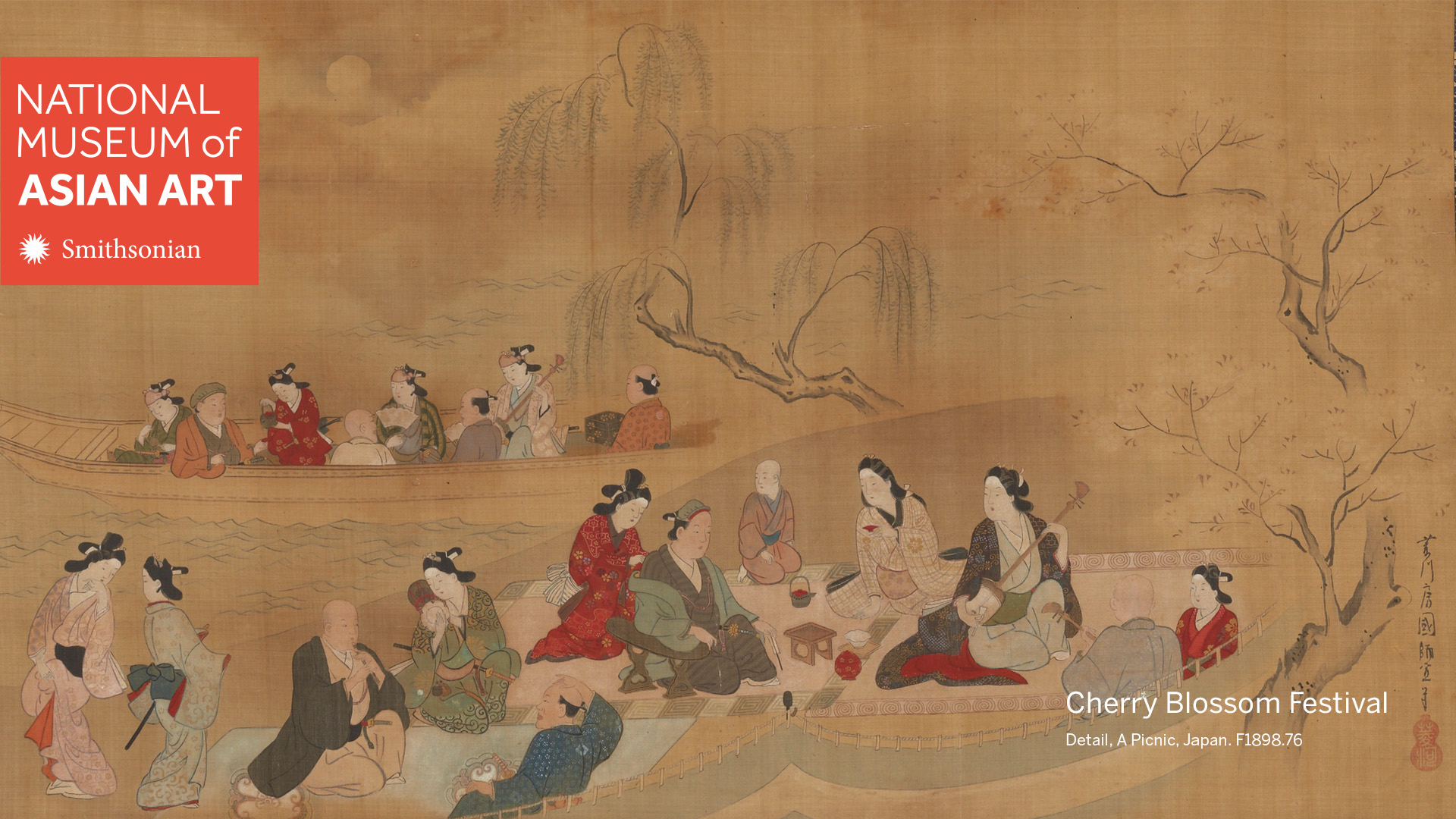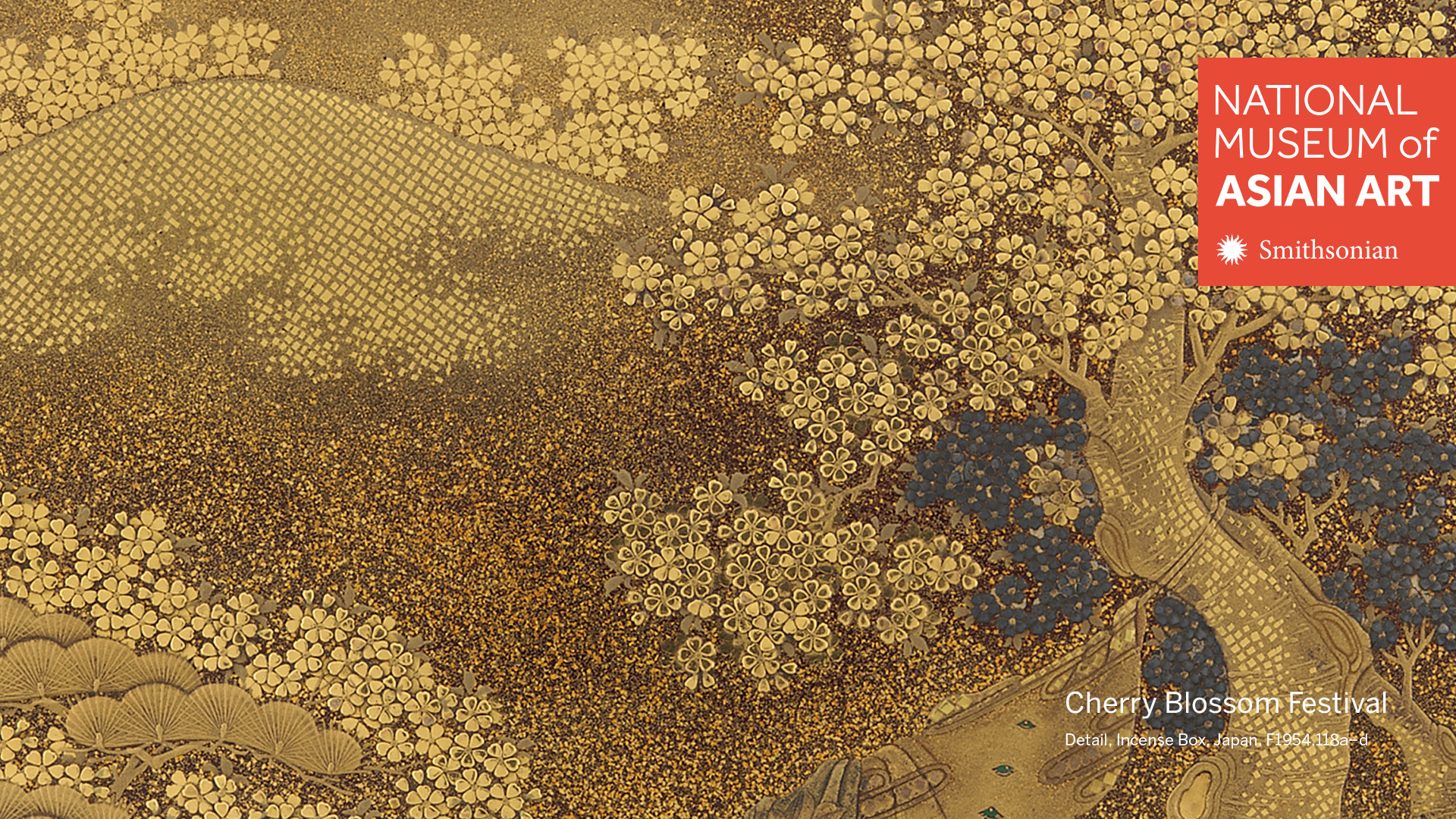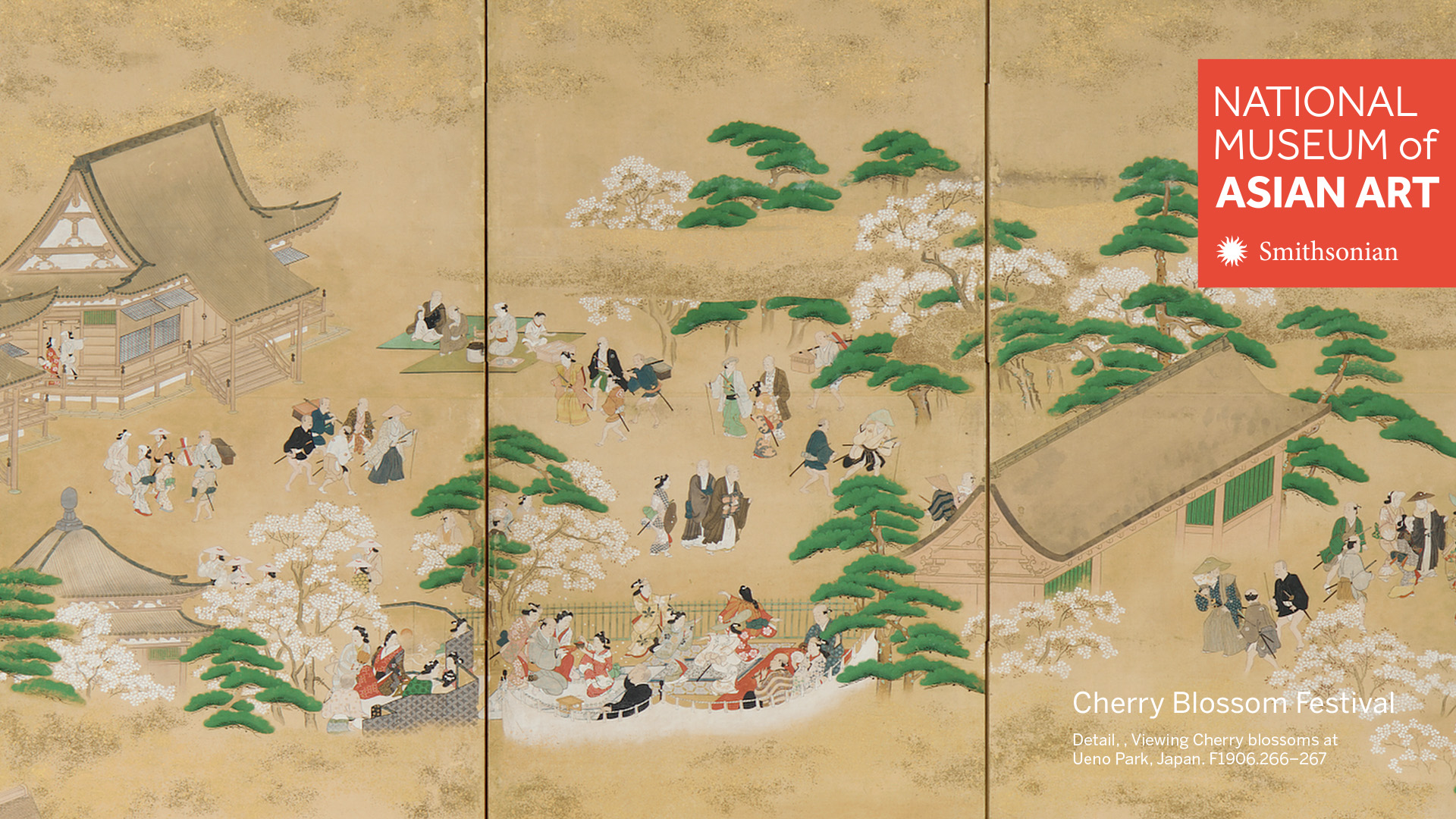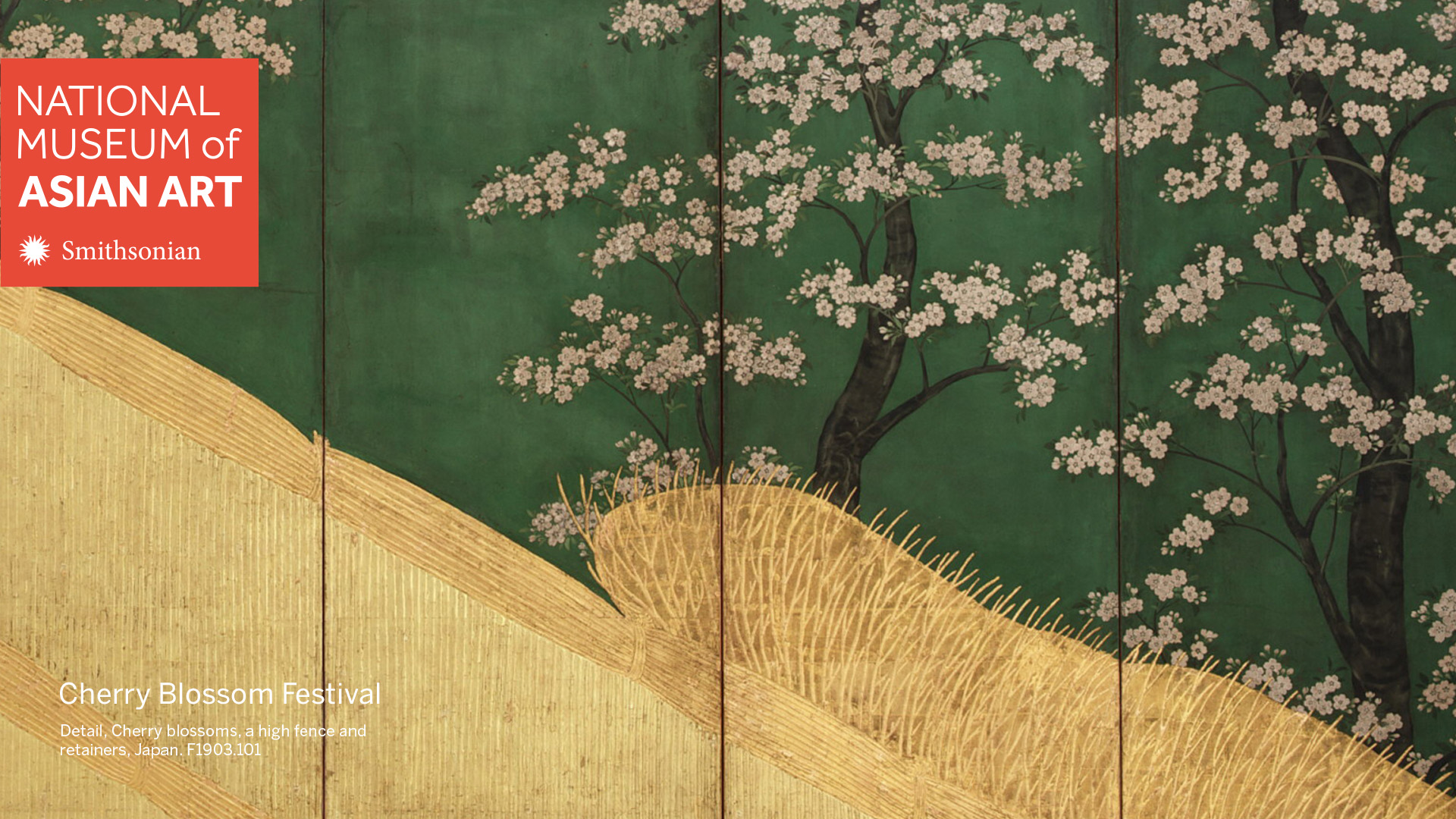The revered sakura, or cherry blossoms, have been celebrated in landscapes, figure paintings, and prints by artists from medieval Japan to Katsushika Hokusai and beyond. Variously thought of as representing the impermanence of things and the joy of spending time together admiring the blossoms, sakura are symbols of joy and cultural meaning.
In Washington, DC, the cherry tree has become a cherished symbol of the friendship between Japan and the United States. It all began in 1912, when Washington saw the arrival of more than 3,000 Japanese cherry trees, the first two of which were planted in West Potomac Park by First Lady Helen Herron Taft and Viscountess Chinda, the wife of the ambassador of Japan to the United States. Since then, Washington, DC’s National Cherry Blossom Festival has grown to include numerous programs and events celebrating the beauty of nature, community spirit, and international friendship.
Don’t miss out on hanami, the traditional Japanese custom of “flower viewing.” Celebrate from home with an array of programs and activities that the National Museum of Asian Art is bringing to your fingertips. Take your group on an interactive docent tour to learn about cherry blossoms in our collections. Explore more Japanese art on your own time with our Objects We Love video series. Take a break and meditate with cherry blossom-themed art in an online Meditation and Mindfulness session, and use specially designed cherry blossom art backgrounds in your next Zoom call.
We look forward to celebrating the season with you. Happy spring!
On View at the Museum
Ay-Ō’s Happy Rainbow Hell
March 25–September 10, 2023
 Immerse yourself in Ay-Ō’s world of sensory experience, exploration, and fun.
Immerse yourself in Ay-Ō’s world of sensory experience, exploration, and fun.
Born in 1931, the Japanese artist Ay-Ō (pronounced “eye-oh”) moved to New York in 1958, where he would soon become a member of the avant-garde group of artists, poets, and performers known as Fluxus. As a part of Fluxus, Ay-Ō produced many works that focus on tactile experiences, such as the Finger Boxes: wooden boxes with hidden compartments that contain objects participants can only touch, not see. It was around this time that Ay-Ō became known internationally as the “Rainbow Artist,” as he has felt compelled to produce rainbow works since the mid-1960s—a compulsion he describes as his own “rainbow hell” (niji no jigoku).
By encompassing anything and everything within the visible light spectrum, Ay-Ō’s rainbow works are an exploration into visuality that is complementary to his tactile works. Driven by his vibrant sense of humor and curiosity, Ay-Ō’s greatest output has been in rainbow-hued silkscreen prints that cover a wide range of subjects, from treatments of the human body and the animal kingdom to abstract compositions and extending to rainbow reinterpretations of other artists’ works.
Featuring over eighty artworks from the collections of the National Museum of Asian Art as well as several other US institutions, Ay-Ō’s Happy Rainbow Hell is the first ever exhibition dedicated to the artist’s work at a museum in the United States. The accompanying catalogue includes a message from Ay-Ō and an illustrated essay from his longtime printer Sukeda Kenryō (b. 1941), in addition to a biographical essay and extended catalogue entries that explore Ay-Ō’s legacy and the complexity of his rainbow obsession. The exhibition also features digital interactives that will allow visitors to engage with Ay-Ō’s spirit of playful exploration and optimism.
Feathered Ink
August 27, 2022–April 2, 2023
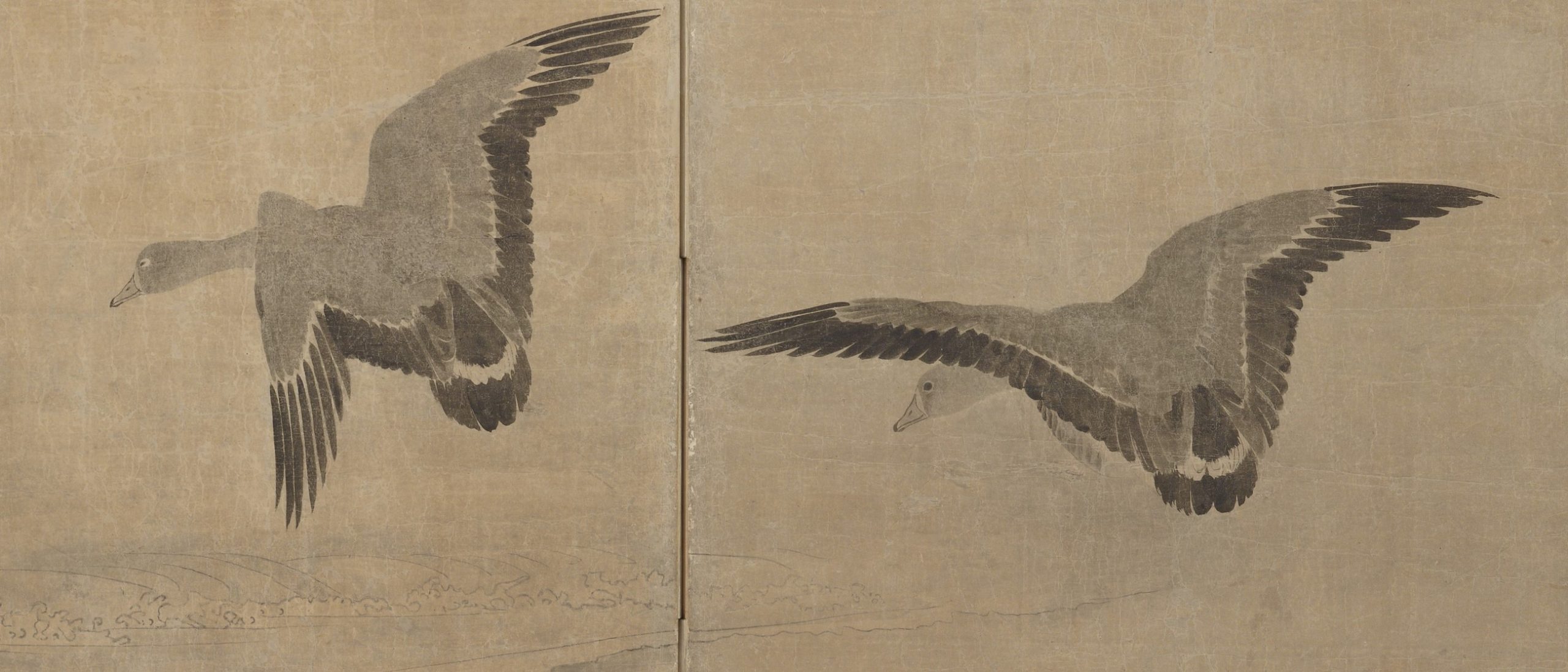 Across three galleries, Feathered Ink explores how Japanese artists have experimented over several centuries with different brush techniques in their depictions of avian subjects. Drawing from the Freer Gallery of Art’s extensive collection of bird-and-flower paintings, the exhibition includes hanging scroll paintings, folding screens, ceramics, and printed books.
Across three galleries, Feathered Ink explores how Japanese artists have experimented over several centuries with different brush techniques in their depictions of avian subjects. Drawing from the Freer Gallery of Art’s extensive collection of bird-and-flower paintings, the exhibition includes hanging scroll paintings, folding screens, ceramics, and printed books.
In Japan, paintings on the theme of birds and flowers began to appear during the Heian period (794–1185) as a way of referencing seasonal associations or auspicious homonyms or of replicating the natural world in remarkable detail. Depicting a variety of bird species in naturalistic or paradisiacal environments offers a tantalizing opportunity for an artist to showcase their skills through the use of virtuosic ink brushwork techniques to represent different feather types and the textures of plumage and foliage. Adding colors can provide further layers of symbolic meaning and decorative effect. Birds are also popular motifs found on early modern Japanese ceramics, rendered through inlaid slip designs, molding, and polychrome pigments. Some of the vessels in this exhibition even provide a glimpse into how Japanese potters emulated the painterly effects of ink on clay surfaces.
Rinpa: Creativity Across Time and Space
October 1, 2022–April 2, 2023
 The Japanese painting movement now known as Rinpa was a loose association of artists that began around the dawn of the seventeenth century and continued into the nineteenth century. Their aesthetic came to define an almost stereotypical image of Japanese art consisting of stylized forms in bright colors. We invite you to explore a selection of paintings and ceramics by several generations of Rinpa artists from our collection.
The Japanese painting movement now known as Rinpa was a loose association of artists that began around the dawn of the seventeenth century and continued into the nineteenth century. Their aesthetic came to define an almost stereotypical image of Japanese art consisting of stylized forms in bright colors. We invite you to explore a selection of paintings and ceramics by several generations of Rinpa artists from our collection.
Rinpa Screens
February 25, 2023–January 28, 2024
 Whether displayed in private households or in temples, screens were an integral part of traditional Japanese interiors. Artists could experiment with painting techniques and motifs on these large, decorative surfaces. The three-dimensional, folded format allowed them to play with perception and to cleverly trick the viewer’s eye so that scenes of undulating dragons, stormy seas, and elegant foliage came to life and animated a room.
Whether displayed in private households or in temples, screens were an integral part of traditional Japanese interiors. Artists could experiment with painting techniques and motifs on these large, decorative surfaces. The three-dimensional, folded format allowed them to play with perception and to cleverly trick the viewer’s eye so that scenes of undulating dragons, stormy seas, and elegant foliage came to life and animated a room.
Explore a selection of screens painted in the Rinpa style, a movement known for stylized forms in bright colors that spanned the seventeenth to the nineteenth century. A complementary display of ceramics demonstrates the aesthetic exchange facilitated by trade between Japan and China and interrogates what makes a work of art Japanese.
Explore Art and Music Online
Treasures from Our Japanese Art Collections
Discover Japanese art from our collections and enjoy talks and performances. Our experts love these exceptional objects, and we think you will fall in love with them too.
Online Interactive Docent Tours
Special Cherry Blossom Sessions
Cherry Blossom Tour
 The revered sakura, or cherry blossom, has been celebrated in landscapes, figure paintings, and prints by artists from medieval Japan to Katsushika Hokusai and beyond. You are invited to embrace hanami, the traditional Japanese custom of “flower viewing,” by going cherry blossom viewing in the museum’s Japanese art collections!
The revered sakura, or cherry blossom, has been celebrated in landscapes, figure paintings, and prints by artists from medieval Japan to Katsushika Hokusai and beyond. You are invited to embrace hanami, the traditional Japanese custom of “flower viewing,” by going cherry blossom viewing in the museum’s Japanese art collections!
These tours for adults are approximately one hour long. To schedule your adult group, please use the online reservation form. All online tours must be scheduled at least four weeks in advance.
Online tours for adults are offered in the following languages by request: English, Cantonese, French, Hindi, Japanese, Korean, and Mandarin.
Cherry Blossom Festival
Available March 13–April 28, 2023
Available for grades pre-K–5
What is it about cherry trees, or sakura, that makes them so beloved? During this virtual field trip, students will explore hanami, the traditional Japanese custom of “flower viewing.” Through paintings, woodblock prints, and other art forms, students will discover Japanese symbols, values, and traditions associated with blooming cherry trees. Students may write poetry; learn Japanese characters; or “jump into” a work of art and imagine what they might hear, feel, see, and smell.
Join our Programs
We invite you to attend our programs focused on Japanese art and culture in honor of cherry blossom season.
Zoom Backgrounds
Cherry Blossom Cheer
Join your next Zoom call with a background featuring cherry blossom-themed artworks from the National Museum of Asian Art collections.
Hanami at Home
It’s back by popular demand! Much like the beloved blossoms themselves, our limited-edition cherry blossom merchandise is here for a limited time in our exclusive online pop-up store.
With shirts, kids’ clothing, mugs, blankets, scarves, and more, we’ve got something for everyone who wants to enjoy the fleeting beauty of the sakura, or cherry blossom, any time of year! Show off your love of the season and support the National Museum of Asian Art with this new collection inspired by artworks from the museum. Proceeds support our exhibitions, research, and education initiatives, helping the museum remain free and accessible to all.
Available through April 17, while supplies last.
In Japanese / 日本語によるフリーアとサックラー
Our museum is committed to making our collections and expertise more widely accessible through programs and resources in multiple languages. In this playlist, you will be able to enjoy Japanese-language material. More coming soon!


